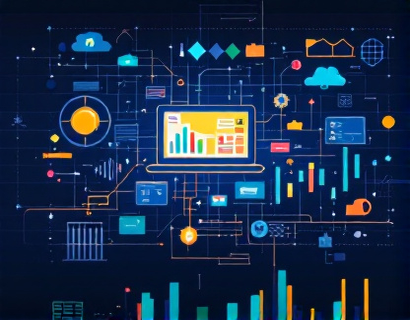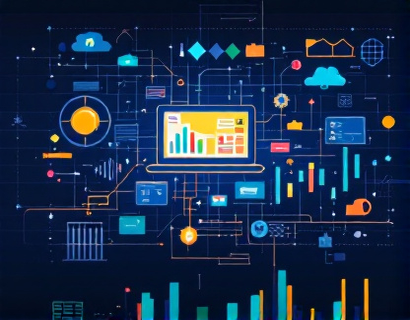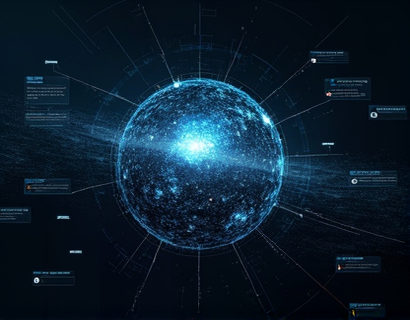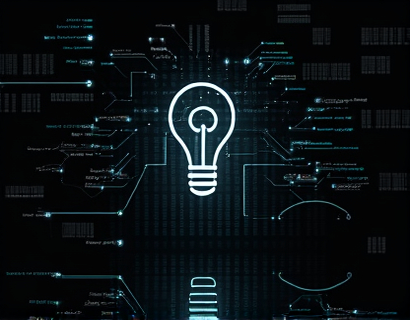Maximize Your Multi-Channel Announcements: A Comprehensive Guide for Businesses and Users
In today's fast-paced digital landscape, businesses and individuals face the challenge of effectively communicating their messages to a diverse audience across multiple platforms. Multi-channel announcements are crucial for maximizing reach, engagement, and impact. This comprehensive guide is designed to provide businesses and users with expert strategies to streamline their announcement processes, ensuring that their messages resonate across various channels. By following these guidelines, you can enhance your communication strategy and foster stronger connections with your audience.
Understanding Multi-Channel Communication
Multi-channel communication involves using more than one platform or medium to reach your audience. This approach allows you to cater to different preferences and behaviors, increasing the likelihood that your message will be seen and heard. Common channels include social media platforms, email newsletters, websites, blogs, podcasts, and traditional media such as TV and radio. Each channel has its unique characteristics and audience demographics, making it essential to tailor your messages accordingly.
Benefits of Multi-Channel Announcements
The advantages of employing a multi-channel strategy are numerous. Firstly, it broadens your reach, allowing you to connect with a wider audience. By using multiple channels, you can tap into different segments of your target market, increasing the chances of engaging with potential customers. Secondly, multi-channel communication enhances credibility and trust. When your brand is consistently present across various platforms, it builds a sense of reliability and professionalism.
Additionally, a multi-channel approach provides flexibility and redundancy. If one channel fails to deliver the desired impact, others can compensate. For instance, if a social media post doesn't generate significant engagement, a well-crafted email newsletter can still drive traffic to your website. This redundancy ensures that your message is not lost and continues to reach your audience through alternative means.
Strategies for Effective Multi-Channel Announcements
To maximize the effectiveness of your multi-channel announcements, consider the following strategies:
1. Define Clear Objectives
Before launching your multi-channel campaign, define clear and measurable objectives. What do you want to achieve? Are you aiming to increase brand awareness, drive traffic to your website, generate leads, or boost sales? Setting specific goals will guide your content creation and channel selection, ensuring that your efforts are focused and aligned with your overall business strategy.
2. Know Your Audience
Understanding your audience is crucial for tailoring your messages and selecting the right channels. Conduct market research to gather insights into your target demographic's preferences, behaviors, and pain points. This information will help you create personalized content that resonates with your audience and encourages engagement.
Segment your audience based on factors such as age, location, interests, and purchasing behavior. This segmentation allows you to customize your messages for each group, increasing the relevance and impact of your announcements. For example, younger audiences may be more active on social media platforms like Instagram and TikTok, while older audiences might prefer email newsletters or traditional media.
3. Craft Compelling Content
Content is the heart of any announcement. Invest time and resources in creating high-quality, engaging content that adds value to your audience. Your message should be clear, concise, and compelling, with a strong call-to-action (CTA) that guides recipients on what to do next. Whether it's visiting your website, signing up for a newsletter, or making a purchase, your CTA should be prominent and easy to follow.
Use a mix of content types to keep your announcements fresh and engaging. This can include text-based posts, images, videos, infographics, and live streams. Each format has its strengths and can appeal to different segments of your audience. For instance, videos are excellent for storytelling and demonstrating products, while infographics can simplify complex information and make it more digestible.
4. Optimize for Each Channel
Each platform has its unique features and best practices. Optimize your content to fit the specific requirements of each channel to maximize visibility and engagement. For example:
- **Social Media**: Keep posts concise and visually appealing. Use relevant hashtags and engage with your followers through comments and direct messages.
- **Email Newsletters**: Personalize your emails and segment your list to send targeted content. Include a clear header, concise paragraphs, and a prominent CTA. Optimize for mobile devices, as most users access emails on their smartphones.
- **Websites and Blogs**: Ensure your content is well-structured and easy to navigate. Use SEO best practices to improve search engine rankings and drive organic traffic. Include internal links to other relevant pages on your site to keep visitors engaged.
- **Podcasts**: Create high-quality audio content that provides value to your listeners. Promote your podcast on your website and social media channels to reach a broader audience.
5. Timing and Frequency
The timing and frequency of your announcements play a significant role in their success. Consider the best times to post on each channel based on your audience's online behavior. For instance, LinkedIn users are more active during weekdays, while Instagram engagement peaks in the evening.
Avoid overwhelming your audience with too many announcements. Strike a balance between keeping them informed and respecting their time. Use analytics to monitor engagement rates and adjust your frequency accordingly. If a particular channel is not performing well, it may be better to focus your efforts elsewhere.
6. Monitor and Analyze Performance
Tracking the performance of your multi-channel announcements is essential for continuous improvement. Use analytics tools provided by each platform to gather data on engagement, reach, click-through rates, and conversion rates. This data will help you identify what works and what doesn't, allowing you to refine your strategy over time.
Set up key performance indicators (KPIs) that align with your objectives. For example, if your goal is to drive website traffic, monitor the number of clicks on your links. If your aim is to increase sales, track the conversion rates from your announcements. Regularly review these metrics to make data-driven decisions and optimize your campaigns.
7. Leverage Cross-Channel Synergy
To maximize the impact of your multi-channel announcements, create a cohesive and synchronized messaging strategy. Ensure that your messages are consistent across all channels, with slight variations to suit each platform's format and audience. This consistency builds brand recognition and reinforces your core message.
Use cross-channel promotions to drive traffic and engagement. For example, promote a social media contest on your email newsletter and vice versa. Encourage your audience to follow you on multiple platforms by including social media links in your emails and vice versa. This synergy creates a seamless user experience and increases the likelihood of engagement.
8. Stay Updated with Trends and Best Practices
The digital landscape is constantly evolving, with new trends and best practices emerging regularly. Stay informed by following industry blogs, attending webinars, and participating in relevant forums. Adapt your strategy to incorporate new tools and techniques that can enhance your multi-channel announcements.
Experiment with emerging platforms and features to stay ahead of the curve. For instance, explore the use of augmented reality (AR) in your announcements or leverage the latest social media trends to capture your audience's attention. Being proactive in adopting new technologies can give you a competitive edge.
Conclusion
Maximizing your multi-channel announcements requires a strategic and thoughtful approach. By defining clear objectives, understanding your audience, crafting compelling content, optimizing for each channel, and monitoring performance, you can significantly enhance your communication efforts. Embrace a cohesive and synchronized strategy that leverages the strengths of each platform, and stay adaptable to the ever-changing digital landscape.
With these strategies in place, you can ensure that your messages reach and resonate with your audience effectively, driving greater engagement and achieving your business goals.










































